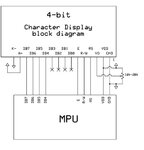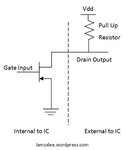Veketti
Full Member level 3
Dear All,
Time after time I run into this problem that what is the best way to power microcontroller projects which need 5VDC. I've used step up converters, LM7805 linear regulator and step down converter. All of these are more or less quite power consuming devices and I'm still looking what would be the best and most effecient solution for battery powering. 3x1.5AA for example in case of LCD display is not good directly as it needs minimum 4.5V. This latest project which uses four I2C temperature sensors need battery powering and circuitry itself draws 5mA. No matter how I put it battery life on continuous operation wouldn't be more than two weeks, but perhaps I can live with that.
Please experts suggest what is the most effecient solution? It doesn't need to be cheap as I'm not planning to mass produce, so component price is not important. I don't want to plug it to wall so AC is not an option. Bottleneck here seems to be the LCD display which needs 4.5-5.5V. Microcontroller and other peripherals (except display) seem to be able to go as low as 3V or so..
Time after time I run into this problem that what is the best way to power microcontroller projects which need 5VDC. I've used step up converters, LM7805 linear regulator and step down converter. All of these are more or less quite power consuming devices and I'm still looking what would be the best and most effecient solution for battery powering. 3x1.5AA for example in case of LCD display is not good directly as it needs minimum 4.5V. This latest project which uses four I2C temperature sensors need battery powering and circuitry itself draws 5mA. No matter how I put it battery life on continuous operation wouldn't be more than two weeks, but perhaps I can live with that.
Please experts suggest what is the most effecient solution? It doesn't need to be cheap as I'm not planning to mass produce, so component price is not important. I don't want to plug it to wall so AC is not an option. Bottleneck here seems to be the LCD display which needs 4.5-5.5V. Microcontroller and other peripherals (except display) seem to be able to go as low as 3V or so..


